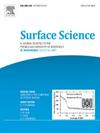Modeling the self-assembly of L-cysteine molecules on the Au(111) surface: A lattice model approach
IF 1.8
4区 化学
Q3 CHEMISTRY, PHYSICAL
引用次数: 0
Abstract
The design of chiral materials with enhanced properties has rapidly gained interest. However, the complex modeling of self-assembled monolayers poses significant challenges to theoretical chemists, making it difficult to accurately predict or explain the structure and thermodynamic properties of adsorption layers in surface science. In the present work, we provide new insights into the self-assembly network of l-cysteine molecules on an Au(111) surface using a lattice model approach. The research focuses on the adsorption behavior of l-cysteine in its deprotonated acidic form [NH3+CH(CH2S-)COOH)], which introduces unique intermolecular interactions due to the charged amino group. Using the Surface Science Modeling and Simulation Toolkit (SuSMoST), we systematically explored multiple adsorption sites and configurations, generating unexplored high-coverage systems that were further analyzed at the density functional level of theory. Our findings highlight the significance of surface arrangements, intra- and inter-molecular interactions in determining the overall stability of the l-cysteine self-assembled monolayers. Among the various configurations analyzed, a newly identified system revealed the highest stability with an adsorption energy of -1.44 eV, competing with previously reported structures.

l -半胱氨酸分子在Au(111)表面的自组装建模:一种晶格模型方法
具有增强性能的手性材料的设计已迅速引起人们的兴趣。然而,自组装单层的复杂建模给理论化学家带来了重大挑战,使得表面科学难以准确预测或解释吸附层的结构和热力学性质。在目前的工作中,我们使用晶格模型方法对Au(111)表面上l-半胱氨酸分子的自组装网络提供了新的见解。本研究重点研究了l-半胱氨酸在去质子酸态[NH3+CH(CH2S-)COOH)]中的吸附行为,由于带电荷的氨基引入了独特的分子间相互作用。利用表面科学建模和仿真工具包(SuSMoST),我们系统地探索了多个吸附位点和构型,生成了未开发的高覆盖系统,并在理论密度功能水平上进一步分析。我们的发现强调了表面排列,分子内和分子间相互作用在决定l-半胱氨酸自组装单层的整体稳定性中的重要性。在分析的各种结构中,新鉴定的体系显示出最高的稳定性,吸附能为-1.44 eV,与先前报道的结构竞争。
本文章由计算机程序翻译,如有差异,请以英文原文为准。
求助全文
约1分钟内获得全文
求助全文
来源期刊

Surface Science
化学-物理:凝聚态物理
CiteScore
3.30
自引率
5.30%
发文量
137
审稿时长
25 days
期刊介绍:
Surface Science is devoted to elucidating the fundamental aspects of chemistry and physics occurring at a wide range of surfaces and interfaces and to disseminating this knowledge fast. The journal welcomes a broad spectrum of topics, including but not limited to:
• model systems (e.g. in Ultra High Vacuum) under well-controlled reactive conditions
• nanoscale science and engineering, including manipulation of matter at the atomic/molecular scale and assembly phenomena
• reactivity of surfaces as related to various applied areas including heterogeneous catalysis, chemistry at electrified interfaces, and semiconductors functionalization
• phenomena at interfaces relevant to energy storage and conversion, and fuels production and utilization
• surface reactivity for environmental protection and pollution remediation
• interactions at surfaces of soft matter, including polymers and biomaterials.
Both experimental and theoretical work, including modeling, is within the scope of the journal. Work published in Surface Science reaches a wide readership, from chemistry and physics to biology and materials science and engineering, providing an excellent forum for cross-fertilization of ideas and broad dissemination of scientific discoveries.
 求助内容:
求助内容: 应助结果提醒方式:
应助结果提醒方式:


